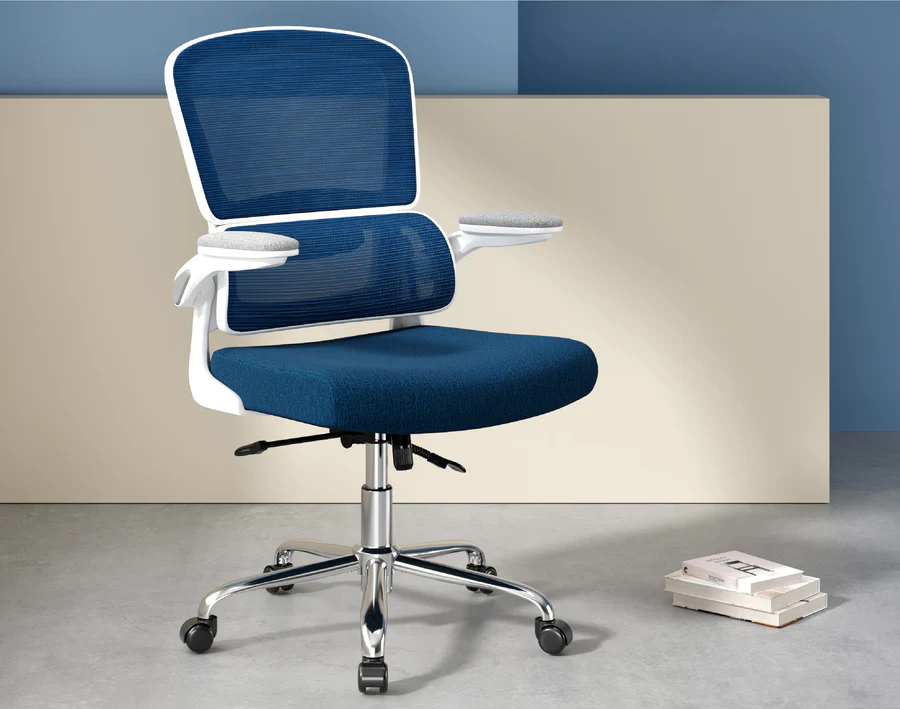Physical Address
304 North Cardinal St.
Dorchester Center, MA 02124
Physical Address
304 North Cardinal St.
Dorchester Center, MA 02124

Both task chairs and office chairs have their own unique sets of features and benefits. Your choice will ultimately depend on your specific needs, workspace, and budget. Regardless of your choice, ensure that the chair you select promotes back health, comfort, and productivity.

When setting up an office space, one of the most important decisions is choosing the right office chair. The main types of office chairs are task chairs and executive office chairs. While they share some common features, there are also key differences in ergonomics, design, portability and intended use. This article examines these chairs side-by-side to help determine which is better suited for your needs.
| Feature | Task Chair | Office Chair |
|---|---|---|
| Ergonomics | More adjustable features like seat height, lumbar support, armrests for better posture and comfort | Basic adjustments like seat height and back tilt |
| Backrest Design | Mid to high backrest, sometimes with separate head/neck rests | Lower backrest |
| Portability | More lightweight and compact for easier mobility | Bulkier executive-style, less portable |
| Cost | More affordable, starting under $100. High-end models up to $700 | More expensive due to size and luxurious materials |
| Intended Use | Ideal for computer-focused work of moderate duration | Better for longer hours, meetings, executive settings |
Task chairs are the ninjas of the chair world—sleek, adaptable, and ready for action. They’re the go-to for those marathon desk sessions, with a design that’s all about maximizing your space and keeping you comfy. These chairs are like the compact cars of office furniture—easy to zip around in tight spaces, unlike their bulkier office chair cousins. If you’re curious about how these ergonomic wonders can change your work life, take a peek at our ergonomic chair buying guide.

What Makes Task Chairs Stand Out:
When it comes to office chairs, especially those plush executive types, it’s all about living the high life. These bad boys are built for the long haul, with cushioned backrests that invite you to lean back and conquer your inbox. Sure, they might be a tad pricier and harder to shuffle around, but for a touch of luxury, they’re worth every penny. If you’re on the tall side and looking for a chair that won’t cramp your style, our roundup of the best office chairs for tall folks has got you covered.

The Lowdown on Office Chairs:
Task chairs prioritize ergonomics and healthy posture. They have more customizable features like adjustable seat depth, 3D armrests, lumbar support, tilt tension, etc. This allows tailoring the chair precisely to the user’s needs and body type.
In contrast, office chairs offer basic adjustments like seat height and back tilt. The emphasis is more on the aesthetics and styling rather than ergonomics.
Task chairs typically have mid to high backrests with lumbar support to cradle the spine. Some feature separate headrests as well. Office chairs usually have lower backrests with basic or no lumbar support.
In terms of the seat, task chairs allow adjusting the depth in addition to height. This accommodates different leg lengths. Office chairs only offer seat height adjustments.
Task chairs tend to be lightweight and compact in their construction using mesh or plastic. This enhances their mobility around the workspace.
In contrast, traditional office chairs are bulkier with cushioned seats and high backs. While suitable for longer duration use, they are less portable.
Basic task chairs start under $100 while high-end ergonomic models can go over $500.
Executive office chairs with plush padding and fine materials have much higher price tags, often over $1000.
So in summary, task chairs focus on ergonomics and flexibility while office chairs prioritize style and aesthetics. Consider factors like budget, tasks performed, and personal preference when deciding between them.
The main difference lies in their design and functionality. Task chairs are more lightweight, adjustable, and designed for functionality, making them ideal for small spaces and regular movement. Office chairs, on the other hand, often feature more padding, a larger footprint, and are designed for comfort over long periods.
Yes, task chairs are designed for long hours of work, offering adjustable features such as lumbar support and armrests to promote good posture and reduce strain. For more details on ergonomic chairs designed for long hours, visit our ergonomic office chairs with lumbar support guide.
Absolutely. Office chairs can be a great addition to a home office, especially if you prioritize comfort and have enough space. They offer enhanced padding and a luxurious feel for extended work sessions.
Adjustability is crucial in both task and office chairs. It allows for a more personalized fit, ensuring proper posture and comfort. Adjustable features can vary, so it’s important to choose a chair that meets your specific ergonomic needs.
Look for durable, comfortable, and breathable materials. Leather and faux leather are popular for their durability and style, while mesh offers breathability, especially in warmer climates. For more information, explore our guide on best materials for your ergonomic chair.